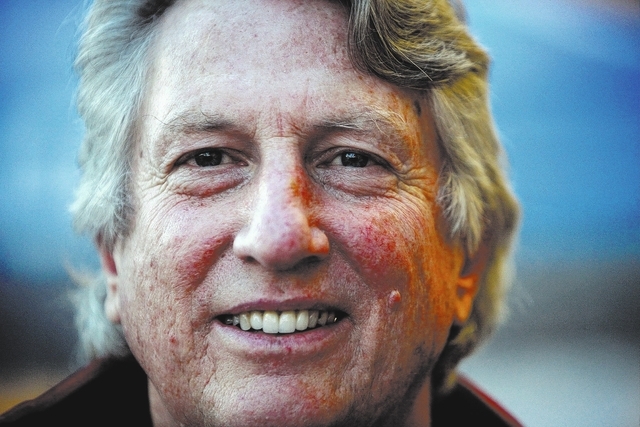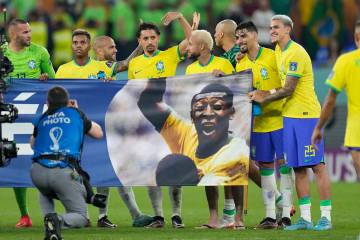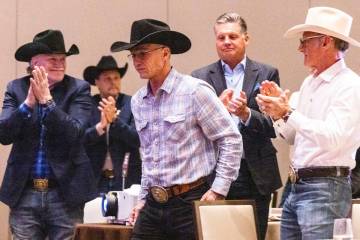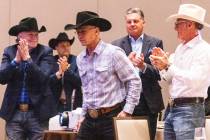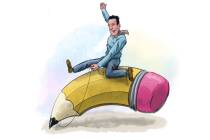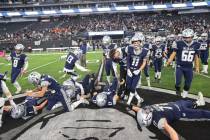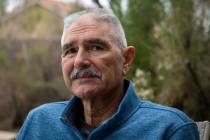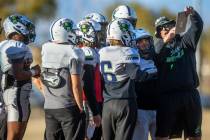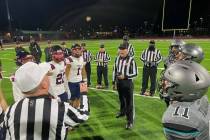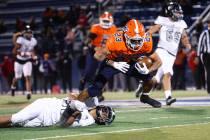Decades after final Flop, Fosbury not forgotten
I saw Dick Fosbury’s Mazda commercial on TV on Friday night. On Saturday, I met the man in person, outside the big curling competition at Orleans Arena. This is what some people would call serendipity.
Before we chatted, I held my fingers an inch apart and said that’s how close he came to hearing from my mother in 1968. It was shortly after he had Fosbury Flopped his way into the national consciousness by winning the high jump at the Mexico City Olympics.
I remember making gold, silver and bronze medals out of construction paper, and inviting neighborhood kids over to our backyard for some Olympic-style competition. We didn’t have a high-jump pit. We had a vegetable garden. So it was decided that the top bar of our swing set was about 7 feet off the ground, and Dick Fosbury had jumped 7 feet, 4¼ inches in winning the gold, so that seemed just about right.
And if we weren’t 11 — and if we had been world-class track and field athletes instead of Little League ballplayers — it would’ve been just about right.
Anyway, my mom, in applying her mom sense, anticipated what we were about to do and yelled out the window that we were going to break our necks. And if we did, we could just send Dick Fosbury the bill.
When I told him that story, Dick Fosbury had a hearty chuckle. He’s 66 now, but a lot of us neighborhood kids still remember him. We remember the Fosbury Flop.
And now another generation of kids, or at least the consumers who raised them, are being introduced to Dick Fosbury and the other innovators — Thomas Jefferson, the guy who invented the bikini, et al. — through those Mazda commercials.
“Um, black-and-white video,” Fosbury said when asked about the first thing that comes to mind when he’s sitting in his living room in Ketchum, Idaho, and that commercial comes on, set to The Who’s equally iconic “Baba O’Riley.”
“No, it’s really fun. They did a really good job with the design, because of the shape of the car, with the hyperbolic parabolas.”
Of course, the hyperbolic parabolas. That’s just what I was going to say. Hyperbolic parabolas were crucial to him inventing the Fosbury Flop. So was a vivid imagination. And the advent of foam rubber high-jumping pits, which replaced the sawdust ones.
When he was in high school in Oregon, Fosbury said he jumped as high as he was going to jump using the tried-and-true scissors method, in which high jumpers landed on their feet. And the straddle technique favored by Russia’s Valeriy Brumel seemed much too complicated.
So Fosbury invented the Flop: He would run toward the bar in a J pattern, and turn his back to the bar before launching himself at it backwards. Head and shoulders would go over first, then his torso. He would kick his feet over the bar last.
A reporter at the newspaper in Medford, Ore., said he looked like a fish flopping into a boat, and thus the Fosbury Flop was born.
His coaches shook their heads. This was just Fosbury being odd, they said. Fosbury excelled at being odd.
But the revolutionary technique kept lifting him higher and higher, like in that Rita Coolidge song (though that song wasn’t out yet). And after testing the resiliency of the foam rubber in those new high-jump pits about a bazillion times, Fosbury found himself in Mexico City, looking at 7-4¼, which was higher than any American or any Olympic athlete had ever gone.
And then, damned if Dick Fosbury didn’t flop right over the top, and into history, and into our living rooms in glorious black and white.
“Even more, with his revolutionary Fosbury Flop, he has this day changed high jumping for all time ...”
You can still hear the resonance of the narrator’s voice in those awesome Bud Greenspan documentaries.
Fosbury did not try for a second gold medal in Munich. He had flunked out of engineering school at Oregon State while training for Mexico City. The dean was kind enough to take him back in, with one condition: that he focus on surveying the things in his path, instead of jumping over them backwards.
“I tried to qualify for the Trials, but the better I did in athletics, the worse my grades became,” Fosbury said of changing priorities. “There’s no professional track and field. I’m a middle-class kid, the first one in my family to get a college degree ...”
Fosbury is now a retired civil engineer, and he’s looking fit and trim after beating stage 1 lymphoma, with an assist from the specialists at the University of New Mexico. He’s doing promotional work for the United States Olympic Committee, which is how I bumped into him, at a “Road to Sochi” interactive fanfest outside the Orleans on Saturday.
Maybe he would have gone on to become like Mark Spitz, had he opted out of engineering school and won another gold medal in ’72. But then he might have had to grow a mustache and wear a Speedo. And people forget he went on “The Mike Douglas Show,” and “The Tonight Show” with Johnny Carson.
They set up a high-jump pit in the studio in Burbank, Calif. Johnny cleared 4 feet. Dick slipped on the dusty floor and nearly broke his neck, like us neighborhood kids nearly did in trying to emulate him.
On his second attempt, Dick Fosbury flopped over the bar at 6-8. In flat-soled sneakers. In a TV studio.
Las Vegas Review-Journal sports columnist Ron Kantowski can be reached at rkantowski@reviewjournal.com or 702-383-0352. Follow him on Twitter: @ronkantowski



